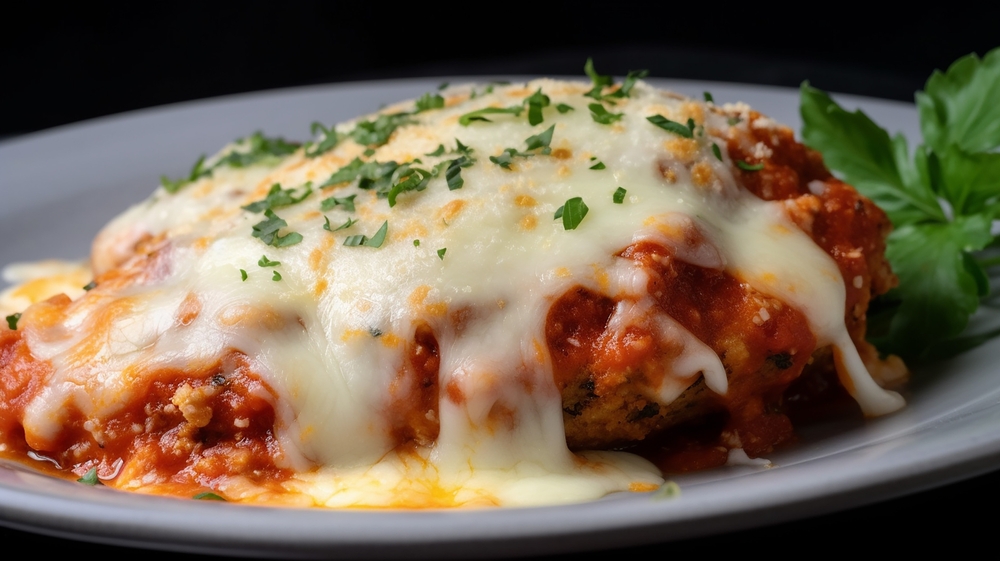
There are certain dishes that have become icons in the world of comfort food, and chicken parmesan is undoubtedly one of them. Loved by millions for its crispy, breaded chicken coated in rich marinara sauce and melted cheese, chicken parmesan has found its way into kitchens, restaurants, and hearts worldwide. But behind this beloved dish lies a fascinating history, filled with stories of cultural fusion, migration, and culinary evolution. In this blog, we’ll dive into the origins of chicken parmesan, explore how it became a staple in American cuisine, and unravel the true story of this dish that’s much more than just a simple plate of comfort.
The Origins of Chicken Parmesan
The story of chicken parmesan begins, somewhat surprisingly, not with chicken, but with eggplant. The dish has deep roots in Italian cuisine, where eggplant parmesan, known as “melanzane alla parmigiana,” is considered a classic. This dish dates back to the southern regions of Italy, specifically Sicily and Naples, and is made by layering thinly sliced eggplant that’s been fried and then baked with tomato sauce, cheese, and sometimes basil or other herbs. The use of eggplant in the recipe was born out of the desire to create a satisfying vegetarian meal that could appeal to the local palate.
The practice of breading and frying ingredients like eggplant and chicken was already established in Italian cooking, but it was in the United States that this method of preparation really evolved into what we now know as chicken parmesan. When Italian immigrants began arriving in the U.S. in the late 19th and early 20th centuries, they brought their culinary traditions with them. The fusion of Old World Italian recipes with New World ingredients led to the creation of numerous Italian-American dishes, chicken parmesan being one of the most popular and enduring.
While eggplant parmesan has a long history in Italy, chicken parmesan, or “pollo alla parmigiana,” is more of a modern American adaptation. The dish is believed to have emerged in the early 20th century, particularly in the large Italian-American communities of New York, Chicago, and other urban centers. Chicken, being more readily available and cheaper than eggplant in many parts of the U.S., gradually took the place of eggplant in the dish, creating the beloved version we recognize today.
The Italian-American Connection
To understand how chicken parmesan became an iconic part of American cuisine, we need to look at the Italian-American experience. In the late 19th and early 20th centuries, a massive wave of Italian immigrants arrived in the United States, seeking better opportunities. These immigrants often settled in cities, where they faced economic hardships and had to adapt to the local environment. Their food culture, rich with regional dishes, became an essential part of their identity.
Italian immigrants didn’t just bring their old-world recipes with them – they also had to adapt to the ingredients and culinary techniques available in their new homeland. In Italy, parmesan cheese, known as Parmigiano-Reggiano, was an integral part of many dishes, particularly those from the northern regions. However, in the U.S., a cheaper, mass-produced version of parmesan cheese was more commonly found, and the availability of other ingredients like marinara sauce made the dish even more accessible.
Over time, Italian-American chefs began experimenting with different variations of traditional Italian recipes, creating new dishes that were more suited to the American palate. Chicken parmesan, or chicken parm, was born out of these innovations, combining the breading and frying techniques that were common in Italy with the availability of chicken and tomato sauce in the U.S. The result was a dish that was hearty, flavorful, and comforting—qualities that quickly made it a favorite among Italian-Americans and the broader American public alike.
The Evolution of Chicken Parmesan
Though chicken parmesan as we know it today is firmly rooted in Italian-American cuisine, the dish’s evolution is a testament to the adaptability and creativity of chefs who were trying to satisfy the tastes of a growing and diverse population. In many ways, the story of chicken parmesan mirrors the story of Italian-American cuisine itself. What began as simple and humble Italian fare gradually evolved into something that appealed to a wide range of American tastes.
The dish’s popularity in the U.S. grew significantly in the mid-20th century, particularly with the rise of Italian-American restaurants. As more Americans discovered the pleasures of pasta, pizza, and other Italian dishes, chicken parmesan became a go-to option for those looking for a satisfying and flavorful meal. Its combination of familiar ingredients – crispy chicken, tangy marinara, and gooey cheese – was both comforting and novel, making it an instant hit in restaurants across the country.
In addition to its appeal in Italian-American restaurants, chicken parmesan began to make its way into mainstream American cuisine. It became a staple of many home-cooked meals, often appearing in family cookbooks and on restaurant menus in various forms. The dish was further popularized through its appearance in movies, television shows, and cookbooks, further cementing its place in American culture.
As the dish gained popularity, it also underwent numerous variations. Some restaurants began offering it with different types of cheese, while others substituted the marinara sauce for pesto or alfredo. Chicken parmesan also began to appear in sandwich form, with the breaded and fried chicken cutlet served in a bun, smothered with sauce and cheese. In many ways, chicken parmesan had become a canvas for creativity, with chefs experimenting with different techniques and ingredients, all while staying true to the core elements of the dish.
Chicken Parmesan Around the World
While chicken parmesan remains a beloved dish in the United States, it has also made its way to other parts of the world. In countries with large Italian communities, such as Canada, Australia, and the United Kingdom, chicken parmesan is a common menu item, often served as a comforting meal for those craving a taste of Italian-American cuisine.
In Australia, for example, chicken parmigiana (often simply called a “parma”) is a classic pub food. It is typically served as a hearty portion with chips (fries) and a side salad, making it a filling and popular choice among Australians. Similarly, in the U.K., chicken parmesan has become a mainstay in many restaurants and is often served alongside other Italian-American dishes like spaghetti bolognese or lasagna.
What makes chicken parmesan truly unique is its versatility. In many places outside the U.S., local variations have emerged that incorporate regional ingredients and flavors. In the U.K., for instance, the dish is sometimes served with a layer of ham beneath the cheese, adding a new dimension of flavor. In Australia, some versions of the dish are served with a variety of side dishes, like mashed potatoes or sautéed vegetables, reflecting local tastes and preferences.
The Legacy of Chicken Parmesan
The history of chicken parmesan is a story of cultural exchange, innovation, and adaptation. It began as a humble dish rooted in the culinary traditions of southern Italy and transformed into a beloved comfort food that has spread across the globe. While its origins may be in Italy, chicken parmesan is undeniably an American creation, shaped by the Italian immigrant experience and the fusion of Old World flavors with New World ingredients.
Today, chicken parmesan is much more than just a meal – it’s a symbol of the power of food to bring people together, bridge cultural divides, and create lasting memories. Whether enjoyed at a family dinner table, in a cozy Italian restaurant, or as a comforting takeout order, chicken parmesan has earned its place as one of the most cherished dishes in the world.
As we continue to enjoy this delicious dish, we can take comfort in knowing that each bite carries with it a rich history, one that spans continents and generations. The story of chicken parmesan is, in many ways, the story of food itself – an ever-evolving journey of creativity, connection, and tradition that continues to inspire cooks and diners alike.
